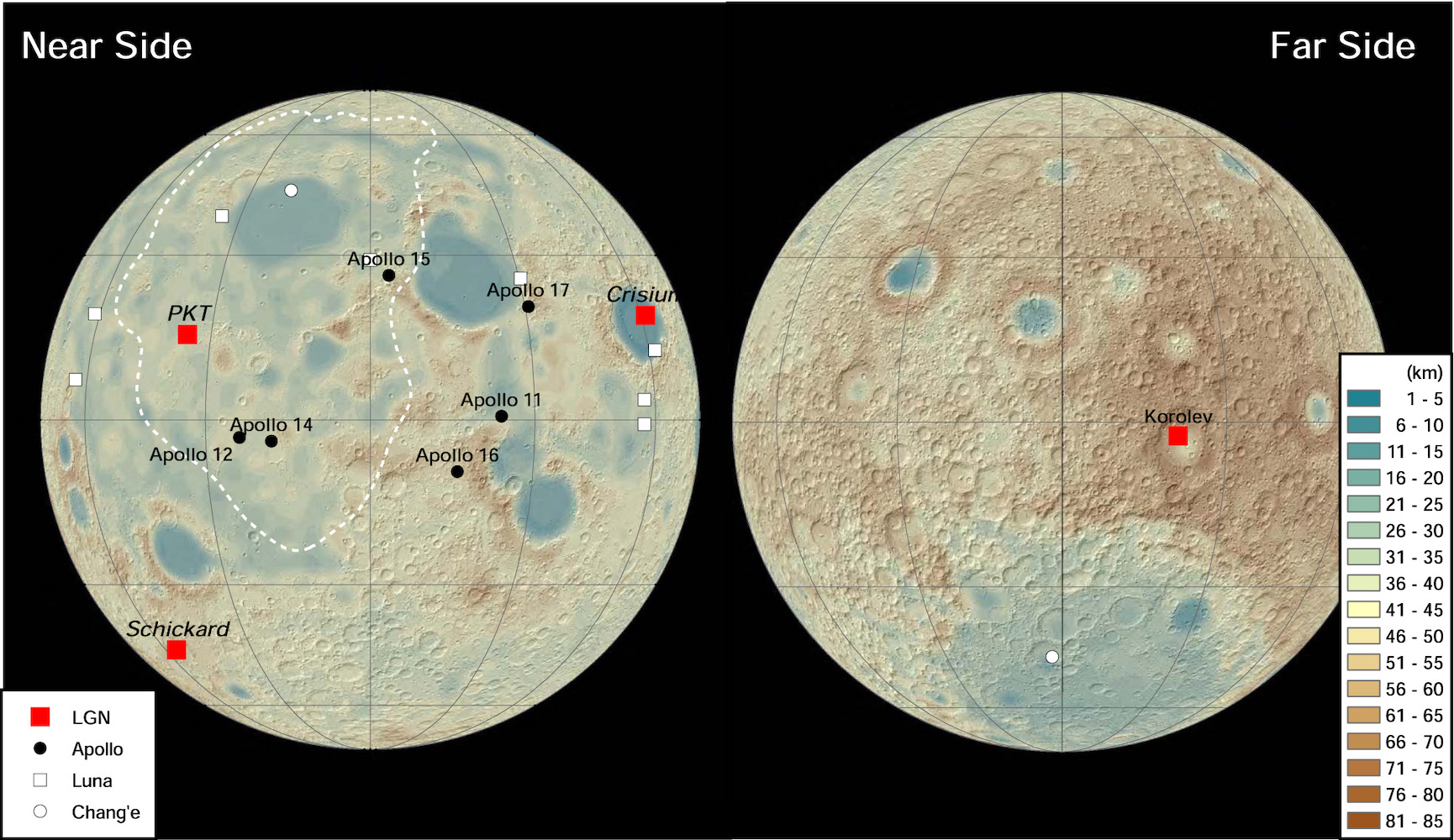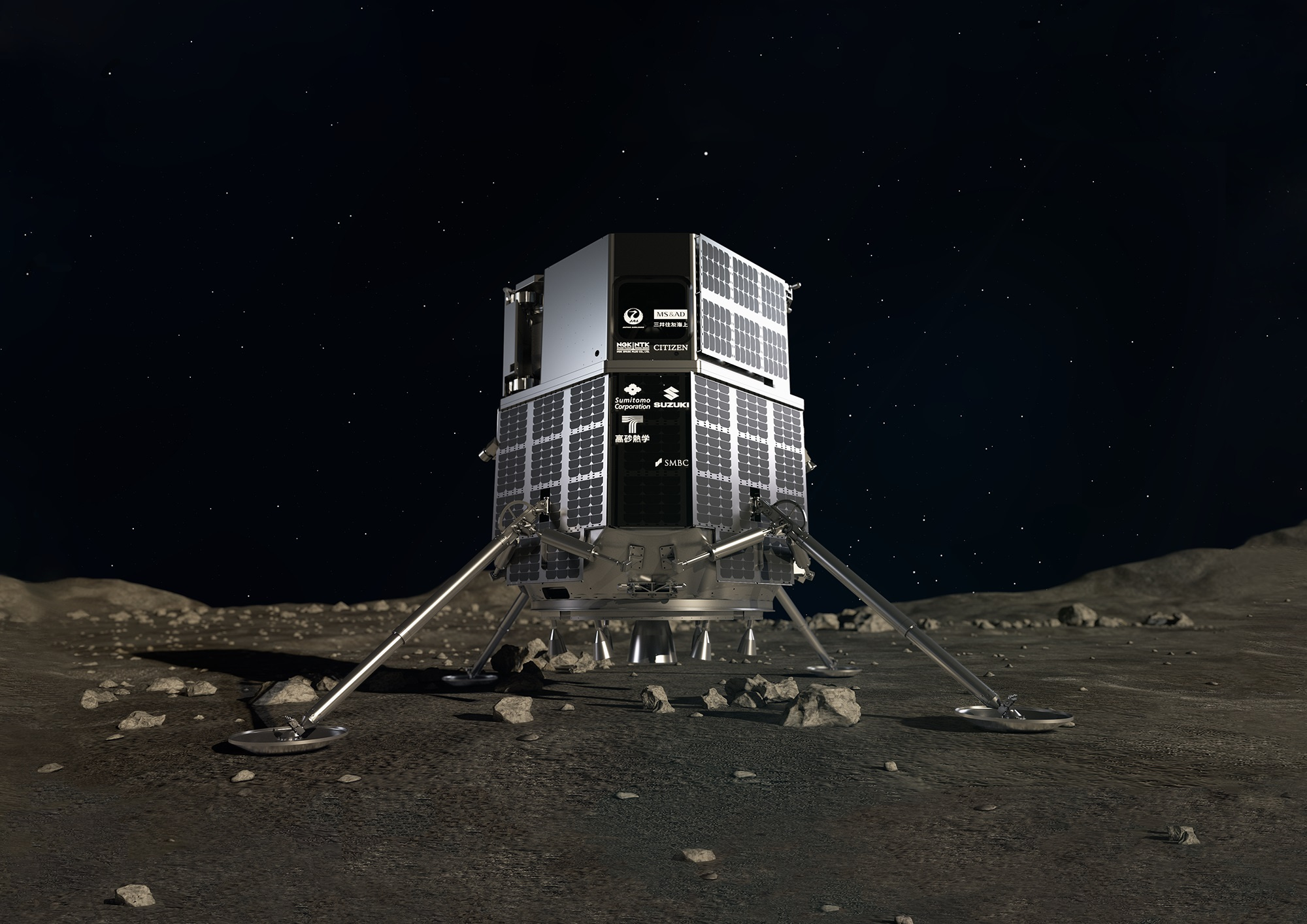Moon Monday #74: Bold new missions and pathways for more lunar science, and loaded hardware updates
I just want to start off by saying how glad I’m for receiving encouraging responses from readers to taking the sponsorships route with Moon Monday last week. Hearing from people I look up to about how they liked the laying out of the rationale and path forward was very reassuring. Thank you so much, I look forward to writing this newsletter for years to come.
This is again one of those weeks where we have an exciting, fundamental lunar science development that seems to have been under-reported. So this week’s opening section is the coverage itself, enjoy!
Scientists want NASA to ensure breakthrough science with Artemis
On April 19, the U.S. National Academies of Sciences released the Planetary Science Decadal Strategy for 2023-2032, a consensus-based report produced by the American scientific community every 10 years listing priority space destinations to explore next and key scientific objectives to achieve at each. While the document isn’t legally binding, NASA uses the Decadal as a guide to build its missions. Most of the report’s lunar-related content can be found in Chapter 19 (Page 526) and Chapter 22 (593), all of which is summarized below.
The Decadal welcomes NASA’s Artemis plans to return humans to the Moon and re-emphasizes (Page 628, Box 22.2) how our cosmic neighbor can answer fundamental questions about our solar system’s history, and lend us unique insights into how planets across the Universe form and evolve. It’s along those lines that the 2023-2032 Decadal made these recommendations to NASA.
(Page 629) Launch the Endurance-A mission later this decade, which will involve a robotic rover traversing 2,000 kilometers across the Moon’s pristine South Pole-Aitken Basin to collect about 100 kilograms of samples to bring to Earth. Studying these samples will undoubtedly lend us revolutionary insights into the conditions on the young Moon and in the early solar system shortly after Earth’s origin. The lander delivering the rover could be a commercial one chosen by NASA under its CLPS program, and the collected samples will be brought to Earth on a crewed Artemis mission.

Distribution of thorium-containing mantle material across the vast South Pole–Aitken Basin on the Moon’s farside. Studying such samples will lend us insights into the Moon’s evolution and that of planets in our solar system and beyond. Credits: NASA / LRO / Lunar Prospector / Dan Moriarty, et al. (Page 646) Implement the Lunar Geophysical Network (LGN), which will see at least four landers touchdown on strategically chosen varied locations on the Moon around the year 2030, each carrying a suite of geophysical instruments that include a seismometer, a retroreflector and a thermal probe. Over at least six years of multipoint observations, this network of instruments will paint us a clear picture of the Moon’s layered interior, which itself is our solar system’s most pristine example of how insides of planets form and differentiate. If NASA’s future funding levels are lower than expected, the Decadal recommends planning the LGN mission later and prioritizing Endurance-A. Related: Recent paper describing the LGN mission.

Near and farside maps depicting the thickness of the Moon’s crust as obtained by NASA’s GRAIL mission. The red squares indicate the proposed locations for LGN. Credits: Heidi Fuqua Haviland, et al. (Page 552) The Decadal repeatedly points out that NASA’s current organizational structure for planning crewed Artemis missions does not enable breakthrough science. NASA’s Lunar Discovery and Exploration Program (LDEP) is the organizational unit chiefly integrating and coordinating Artemis science efforts across the agency and its commercial plus international partners. They recently helped publish the Science Definition report for the first crewed landing with Artemis III. And yet LDEP lacks a Director or Chief Scientist position authorized to implement scientific objectives within Artemis. Even the organizational units above LDEP in hierarchy lack such powers. The Decadal strongly urges NASA to fix this. Scientists go on to say that NASA hasn’t formulated a dedicated Artemis Science Team either but that’s no longer correct. It was true when the report was being prepared but in March 2022, NASA revealed a formal Artemis science structure.
(Page 626) The Decadal lauds the competitive, firm-fixed price model of NASA’s CLPS program to purchase science & technology payload deliveries to the Moon on commercial landers. Scientists say once the landing systems prove reliable, their higher flight cadence will allow more focused and follow-up science as well as cost-effective testing and advancing of novel lunar technologies. As landing capabilities mature later in the decade, scientists say NASA should enhance the scope of CLPS missions and even extend the model to Mars, asteroids and other nearby bodies. The Decadal also vouches for extending the CLPS model to leverage the greatly enhanced capabilities of SpaceX’s (lunar) Starship (Page 561) by setting up funding mechanisms to allow community members to fly robotic payloads on such high-capacity flights.
(Page 551) The Decadal interprets the Artemis Accords’ principle of sustainably using the Moon’s resources as being a balance between scientific and consumption needs. This automatically implies a critical need for NASA to map and understand the nature of all polar lunar resources, especially water ice. This will help identify kinds of resources scientifically more pristine than others and accordingly allocate their purposes. The Decadal recommends forming an international oversight structure involving signees of the Accords to ensure appropriate and fair use of lunar resources.
(Page 548) While the basic geological training provided to Apollo astronauts was sufficient for their short lunar missions, Artemis astronauts exploring the Moon for decidedly longer periods will require more comprehensive and sustained field training and instrumentation handling. Related: ESA’s ongoing Caves & Pangaea astronaut training campaign.
Astrobotic unveils their Moon lander
Last week Astrobotic unveiled the in-progress flight model of its Peregrine spacecraft, which will land on the Moon in the fourth quarter of this year. The parts of the spacecraft left to be assembled are the engines, two fuel tanks, solar panels and the flight decks, the latter of which already have several mission payloads integrated onto them. After Peregrine is fully assembled, it will undergo all the standard, extensive space-simulating tests followed by launch preparations.

The mission, part of NASA’s CLPS program, will carry 11 NASA instruments, chief of which are three spectrometers to track the movements of water on the Moon’s surface. The mass spectrometer will also measure water and other volatiles released by the solar wind impinging the lunar soil. Such data will help scientists understand how water gets transported around the Moon, particularly from the equator to permanently shadowed regions on the poles, where it can remain preserved for billions of years.
NASA to conduct a full wet dress rehearsal for the SLS after all
NASA will roll back the fully stacked SLS rocket to its assembly building this week to repair its mobile launcher’s hydrogen leak and the faulty helium check valve on the rocket’s second stage while their nitrogen gas supplier upgrades the pipelines. NASA says the rocket will return to the launchpad for another full wet dress rehearsal test attempt. If successful, NASA will roll back the rocket to the assembly building for final checkouts and launch preparations. So NASA has decided not to rush through the test after all, which is great. The Artemis I Moon mission to send an uncrewed Orion spacecraft around the Moon and back will now launch in August at best.
ispace’s first Moon landing mission on time
ispace Japan says their first Moon landing mission in on track to launch in Q4 2022, having almost completed assembling the lander in Europe. They aim to conduct the lander’s space-simulating tests in June, and then ship it to the U.S. around September or October to prepare for launch on a SpaceX Falcon 9 rocket. Mission payloads include UAE’s Rashid rover, a solid-state battery tech demo, a transformable lunar robot by the Japanese space agency, multiple Canadian payloads and services, and more. In a first for a commercial lunar mission, ispace is also looking to get insurance for their lander.

More Moon
- The NASA LRO Blog has a great writeup on how the Apollo 16 landing site’s geology took astronauts by surprise, and how geologists underestimated the role of meteorite impacts in the evolution of the Moon’s rocky highlands as opposed to volcanism. I wonder how many such stark finds Artemis will have in store for us.
- Lonestar will deploy small, virtual and hardware-based data centers on Intuitive Machines’ first and second Moon landing missions respectively as a proof-of-concept of their future commercial service. Considering that space-grade electronics cost way more than terrestrial electronics while having limited processing capabilities, color me skeptical. Unless of course Lonestar sticks to selling for niche use cases. Or maybe I’m missing an entire bold new development in the space industry?
- NASA is collaborating with the industry to build a portable, high-resolution Lidar mapping system for future astronauts to safely navigate regions on the Moon lacking Earth communications, such as when venturing into permanently shadowed regions or even exploring the shadowy polar terrain besides.
Thank you Epsilon3 for sponsoring this week’s Moon Monday.
